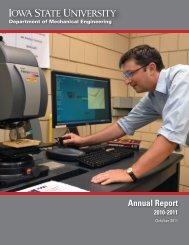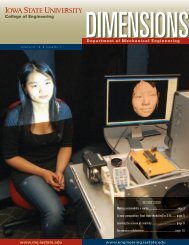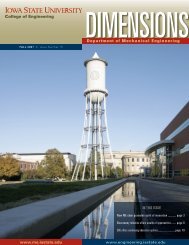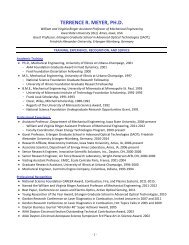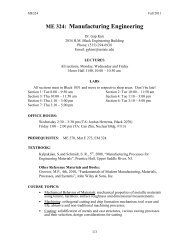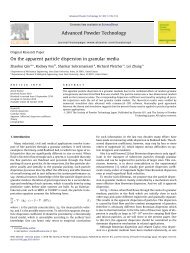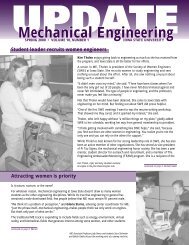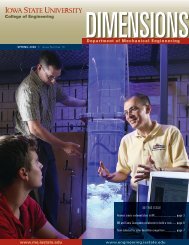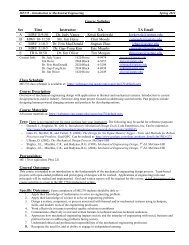TABLE 3. Statistics for 10,000 attempted solves of Eqn. (21) us<strong>in</strong>g SNOPT for various values of I. For each value of I, a s<strong>in</strong>gle set of samples of ι i ,r i ,m i ,B i and the random utility coefficients are drawn as specified <strong>in</strong> the text. Different trials for each I are started at randomly drawn <strong>in</strong>itial conditions, us<strong>in</strong>g the same set of samples. Number of Individuals (I) 5 10 15 20 25 30 35 40 45 50 Collections of Choice Sets (#) 10 1.5 10 3 10 4.5 10 6 10 7.5 10 9 10 10.5 10 12 10 13.5 10 15.1 Statistics from 100,000 solves of Eqn. (23) start<strong>in</strong>g at randomly drawn <strong>in</strong>itial conditions us<strong>in</strong>g SNOPT Feasible Collections of Choice Sets (#) 10 26 48 77 108 133 158 207 257 327 Locally Optimal Solutions (#) 2 4 7 9 8 10 13 11 11 10 Optimal Profits (10 4 $) 1.60 1.38 1.15 1.16 1.22 1.19 1.10 1.10 1.15 1.10 “Volume” of Optimal <strong>Consider</strong>ation Set (%) 50.1 12.7 6.8 6.6 6.1 3.1 1.9 1.9 1.9 1.5 Statistics from 10,000 attempted solves of Eqn. (21) start<strong>in</strong>g at randomly drawn <strong>in</strong>itial conditions us<strong>in</strong>g SNOPT Number of Problem Variables (#) 32 62 92 122 152 182 212 242 272 302 Number of Problem Constra<strong>in</strong>ts (#) 36 71 106 141 176 211 246 281 316 351 Number of Local Solutions Computed (#) 5 6 9 11 13 13 15 16 19 17 Maximum Profits Computed (10 4 $) 1.60 1.38 1.15 1.16 1.22 1.19 1.10 1.10 1.15 1.08 Average Compute Time (all runs) (µs) 4.1 9.3 10.9 15.4 18.6 23.8 26.6 33.3 40.8 49.5 Successful Solves (%) 99.7 99.4 96.6 95.8 97.7 97.4 97.9 96.6 97.3 92.9 Term<strong>in</strong>ated at a Trivial KKT Po<strong>in</strong>t (%) 0.03 0.03 0.20 0.19 0.12 0.16 0.07 0.16 0.11 0.26 Solver Failed to Converge (%) 0.19 0.52 3.10 3.91 2.06 2.28 1.81 1.94 2.19 6.43 [14] Kumar, D., Hoyle, C., Chen, W., Wang, N., Gomex-Levi, G., and Koppelman, F., 2009. “A Hierarchical Choice Model<strong>in</strong>g Approach for Incorporat<strong>in</strong>g Customer Preferences <strong>in</strong> Vehicle Package <strong>Design</strong>”. International Journal of Product Development, 8(3), pp. 228–251. [15] MacDonald, E., Whitefoot, K., Allison, J., Papalambros, P. Y., and Gonzalez, R., 2010. “An Investigation of Susta<strong>in</strong>ability, Preference, and Profitability <strong>in</strong> <strong>Design</strong> Optimization”. In Proceed<strong>in</strong>gs of the ASME 2010 International <strong>Design</strong> Eng<strong>in</strong>eer<strong>in</strong>g Technical Conferences. [16] Frischknecht, B. D., Whitefoot, K., and Papalambros, P. Y., 2010. “On the Suitability of Econometric Demand <strong>Models</strong> <strong>in</strong> <strong>Design</strong> for Market Systems”. Journal of Mechanical <strong>Design</strong>, 132, pp. 1–11. [17] Simon, H. A., 1957. <strong>Models</strong> of Man. Wiley. [18] Coombs, C. H., 1964. A Theory of Data. Wiley. [19] Dawes, R. M., 1964. “Social selection based on multidimensional criteria”. Journal of Abnormal and Social Psychology, 68, pp. 104–109. [20] E<strong>in</strong>horn, H. J., 1970. “The use of nonl<strong>in</strong>ear, noncompensatory models <strong>in</strong> decision mak<strong>in</strong>g”. Psychological Bullet<strong>in</strong>, 73, pp. 211–230. [21] Tversky, A., 1972. “Elim<strong>in</strong>ation by Aspects: A Theory of Choice”. Psychological Review, 79(4), pp. 281–299. [22] Simon, H. A., 1986. “Rationality <strong>in</strong> psychology and economics”. The Journal of Bus<strong>in</strong>ess, 59(4), pp. S209–S224. [23] Hauser, J. R., and Wernerfelt, B., 1990. “An Evaluation Cost Model of <strong>Consider</strong>ation Sets”. Journal of Consumer Research, 16, p. 393=408. [24] Hauser, J. R., Forthcom<strong>in</strong>g. “<strong>Consider</strong>ation Set Heuristics”. Journal of Bus<strong>in</strong>ess Research. [25] Hauser, J. R., 1978. “Test<strong>in</strong>g the Accuracy, Usefulness and Significance of Probabilistic <strong>Models</strong>: An Information- Theoretic Approach”. Operations Research, 26(3), pp. 406–421. [26] Payne, J. W., 1976. “Task Complexity and Cont<strong>in</strong>gent Process<strong>in</strong>g <strong>in</strong> <strong>Decision</strong> Mak<strong>in</strong>g: An Information Search”. Organizational Behavior and Human Performance, 16, 14 Copyright c○ 2012 by ASME
pp. 366–387. [27] Hauser, J. R., Forthcom<strong>in</strong>g. “A Market<strong>in</strong>g Science Perspective on Recognition-<strong>Based</strong> Heuristics (and the Fast andFrugal Paradigm)”. Judgment and <strong>Decision</strong> Mak<strong>in</strong>g. [28] Gilbride, T. J., and Allenby, G. M., 2004. “A Choice Model with Conjuctive, Disjunctive, and Compensatory Screen<strong>in</strong>g Rules”. Market<strong>in</strong>g Science, 23(3), pp. 391–406. [29] Hauser, J., D<strong>in</strong>g, M., and Gask<strong>in</strong>, S. P., 2009. “Non-Compensatory (and Compensatory) <strong>Models</strong> of <strong>Consider</strong>ation-Set <strong>Decision</strong>s”. In 2009 Sawtooth Software Conference Proceed<strong>in</strong>gs, Sequ<strong>in</strong> WA. [30] Hauser, J. R., Toubia, O., Evgeniou, T., Befurt, R., and Dzyabura, D., 2010. “Disjunctions of Conjunctions, Cognitive Simplicty, and <strong>Consider</strong>ation Sets”. Journal of Market Research, XLVII, pp. 485–496. [31] Dzyabura, D., and Hauser, J. R., 2010. Active Mach<strong>in</strong>e Learn<strong>in</strong>g for <strong>Consider</strong>ation Heuristics. Tech. rep., MIT Sloan School of Management. [32] Liu, Q., and Arora, N., 2011. “Efficient Choice <strong>Design</strong>s for a <strong>Consider</strong>-Then-<strong>Choose</strong> Model”. Market<strong>in</strong>g Science, 30(2), pp. 321–338. [33] Urban, G., Kim, J., MacDonald, E., Hauser, J. R., and Dzyabura, D., 2010. “Develop<strong>in</strong>g consideration rules for durable goods markets”. In INFORMS Market<strong>in</strong>g Science Conference, Cologne, June 17-19. [34] Gill, P. E., Murray, W., and Saunders, M. A., 2005. “SNOPT: An SQP Algorithm for Large-Scale Constra<strong>in</strong>ed Optimization”. SIAM Review, 47(1), pp. 99–131. [35] Nocedal, J., and Wright, S. J., 2006. Numerical Optimization. Spr<strong>in</strong>ger-Verlag. [36] Waltz, R. A., Morales, J. L., Nocedal, J., and Orban, D., 2006. “An <strong>in</strong>terior algorithm for nonl<strong>in</strong>ear optimization that comb<strong>in</strong>es l<strong>in</strong>e search and trust region steps”. Mathematical Programm<strong>in</strong>g, Series A, 107(3), pp. 391–408. [37] Donndel<strong>in</strong>ger, J. A., Rob<strong>in</strong>son, J. A., and Wissmann, L. A., 2008. “Choice model specification <strong>in</strong> market-based eng<strong>in</strong>eer<strong>in</strong>g design”. In Proceed<strong>in</strong>gs of the 34th ASME <strong>Design</strong> Automation Conference, Brooklyn, NY. [38] Ferguson, S., Olewnik, A., Maleganokar, P., Cormier, P., and Kansara, S., 2010. “Mass Customization: A Review of the Paradigm Across Market<strong>in</strong>g, Eng<strong>in</strong>eer<strong>in</strong>g, and Distribution Doma<strong>in</strong>s”. In Proceed<strong>in</strong>gs of the ASME 2010 International <strong>Design</strong> Eng<strong>in</strong>eer<strong>in</strong>g Technical Conferences. [39] Whitefoot, K., Fowlie, M., and Skerlos, S. J., 2011. Product <strong>Design</strong> Repsonse to Industrial Policy: Evaluat<strong>in</strong>g Fuel Economy Standards Us<strong>in</strong>g an Eng<strong>in</strong>eer<strong>in</strong>g Model of Endogenous Product <strong>Design</strong>. Tech. Rep. EI @ Haas WP 214, Haas School of Bus<strong>in</strong>ess, University of California Berkeley. [40] Bonami, P., Biegler, L. T., Conn, A. R., Cornuejols, G., Grossmann, I. E., Laird, C. D., Lee, J., Lodi, A., Margot, F., Sawaya, N., and Wachter, A., 2005. An Algorithmic Framework for Convex Mixed Integer Nonl<strong>in</strong>ear Programs. Tech. Rep. RC23771 (W05110923), IBM Research Division. [41] EPA, 2012. fueleconomy.gov. [42] Papadimitriou, C., and Stieglitz, K., 1998. Comb<strong>in</strong>atorial Optimization: Algorithms and Complexity. Dover. [43] Kokkolaras, M., Audet, C., and Jr., J. E. D., 2001. “Mixed Variable Optimization of the Number and Composition of Heat Intercepts <strong>in</strong> a Thermal Insulation System”. Optimization and Eng<strong>in</strong>eer<strong>in</strong>g, 2(1), pp. 5–29. [44] Ralph, D., 2008. “Mathematical programs with complementarity constra<strong>in</strong>ts <strong>in</strong> traffic and telecommunications networks”. Royal Society of London. Philosophical Transactions. Mathematical, Physical and Eng<strong>in</strong>eer<strong>in</strong>g Sciences., 366(1872), pp. 1973–1987. [45] Dirkse, S. P., and Ferris, M. C., 1995. “The PATH Solver: A non-monotone stabilization scheme for mixed complementarity problems”. Optimization Methods and Software, 5, pp. 123–156. [46] Dirkse, S. P., and Ferris, M. C., 1996. “A pathsearch damped Newton method for comput<strong>in</strong>g general equilibria”. Annals of Operations Research, 68, pp. 211–232. [47] Ferris, M. C., and Pang, J. S., 1997. “Eng<strong>in</strong>eer<strong>in</strong>g and economic applications of complementarity problems”. SIAM Review, 39, pp. 669–713. [48] Ferris, M. C., Kanzow, C., and Munson, T. S., 1999. “Feasible Descent Algorithms for Mized Complementarity Problems”. Mathematical Programm<strong>in</strong>g, 86, pp. 475–497. [49] Munson, T., 2000. “Algorithms and Environments for Complementarity”. PhD thesis, University of Wiscons<strong>in</strong>- Madison. [50] Leyffer, S., Lopez-Calva, G., and Nocedal, J., 2006. “Interior Methods for Mathematical Programs with Complementarity Constra<strong>in</strong>ts”. SIAM Journal on Optimization, 17(1), pp. 52–77. [51] Fletcher, R., Leyffer, S., Ralph, D., and Scholtes, S., 2006. “Local Convergence of SQP Methods for Mathematical Programs with Equilibrium Constra<strong>in</strong>ts”. SIAM Journal on Optimization, 17(1), pp. 259–286. [52] Scholtes, S., 2001. “Convergence properties of a regularization scheme for mathematical programs with complementarity constra<strong>in</strong>ts”. SIAM Journal on Optimization, 11, pp. 918–936. [53] Liu, X., and Sun, J., 2004. “Generalized stationary po<strong>in</strong>ts and an <strong>in</strong>terior-po<strong>in</strong>t method for mathematical programs with equilibrium constra<strong>in</strong>ts”. Mathematical Programm<strong>in</strong>g, 101, pp. 231–261. [54] DeMiguel, V., Friedlander, M. P., Nogales, F. J., and Scholtes, S., 2005. “A two-sided relaxation scheme for mathematical programs with equilibrium constra<strong>in</strong>ts”. SIAM Journal on Optimization, 16, pp. 587–609. [55] Anitescu, M., 2005. “Global Convergence of an Elastic 15 Copyright c○ 2012 by ASME




